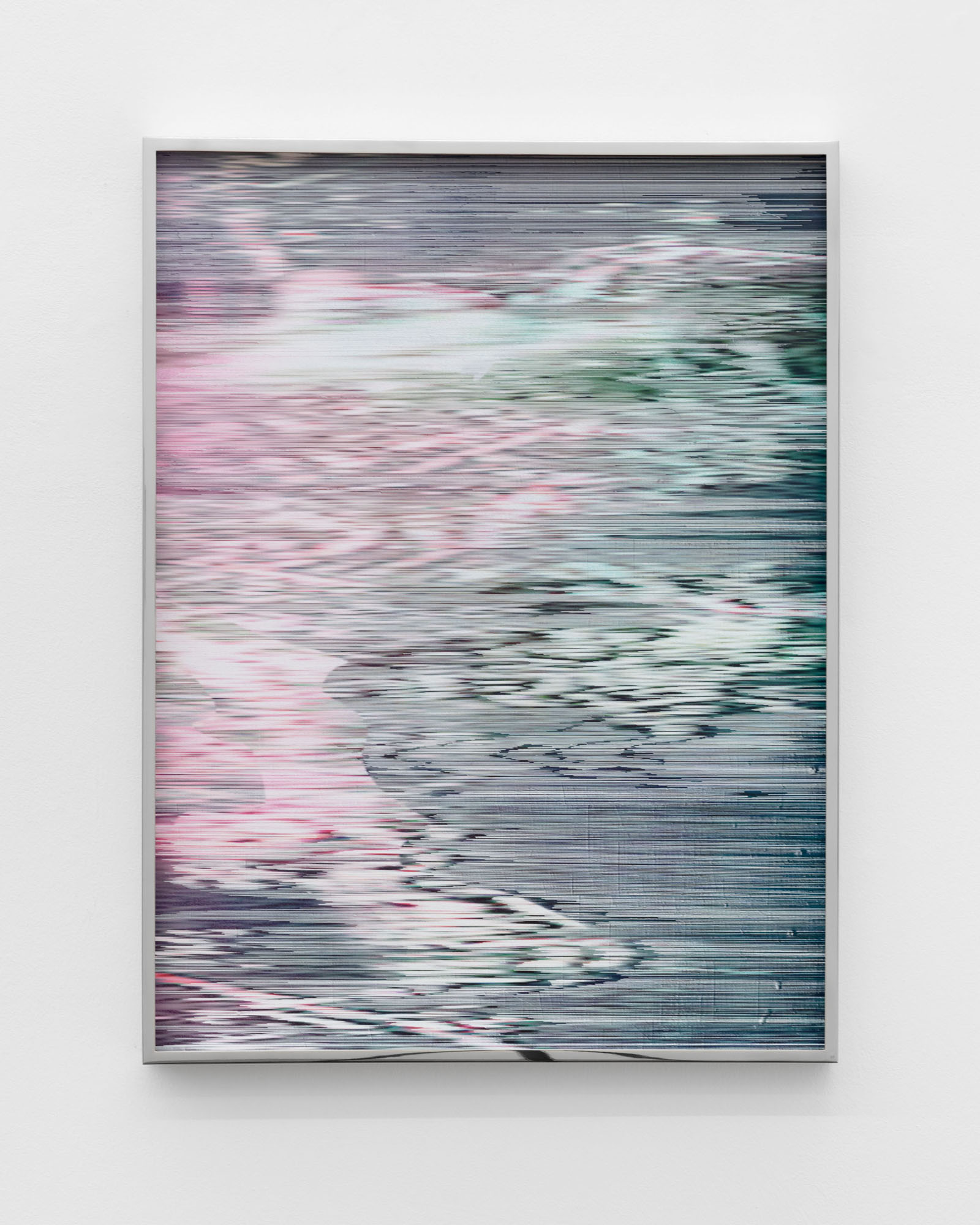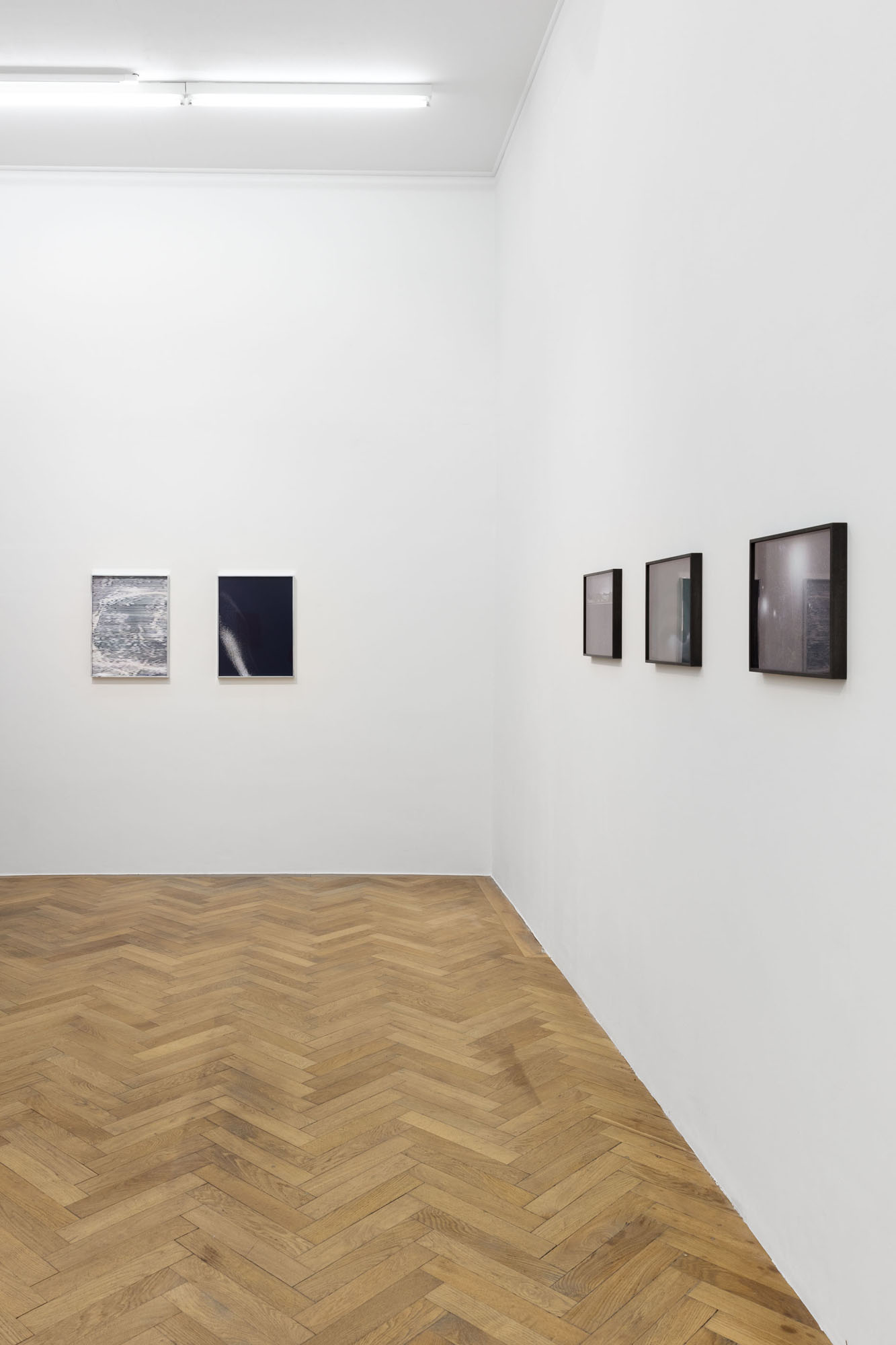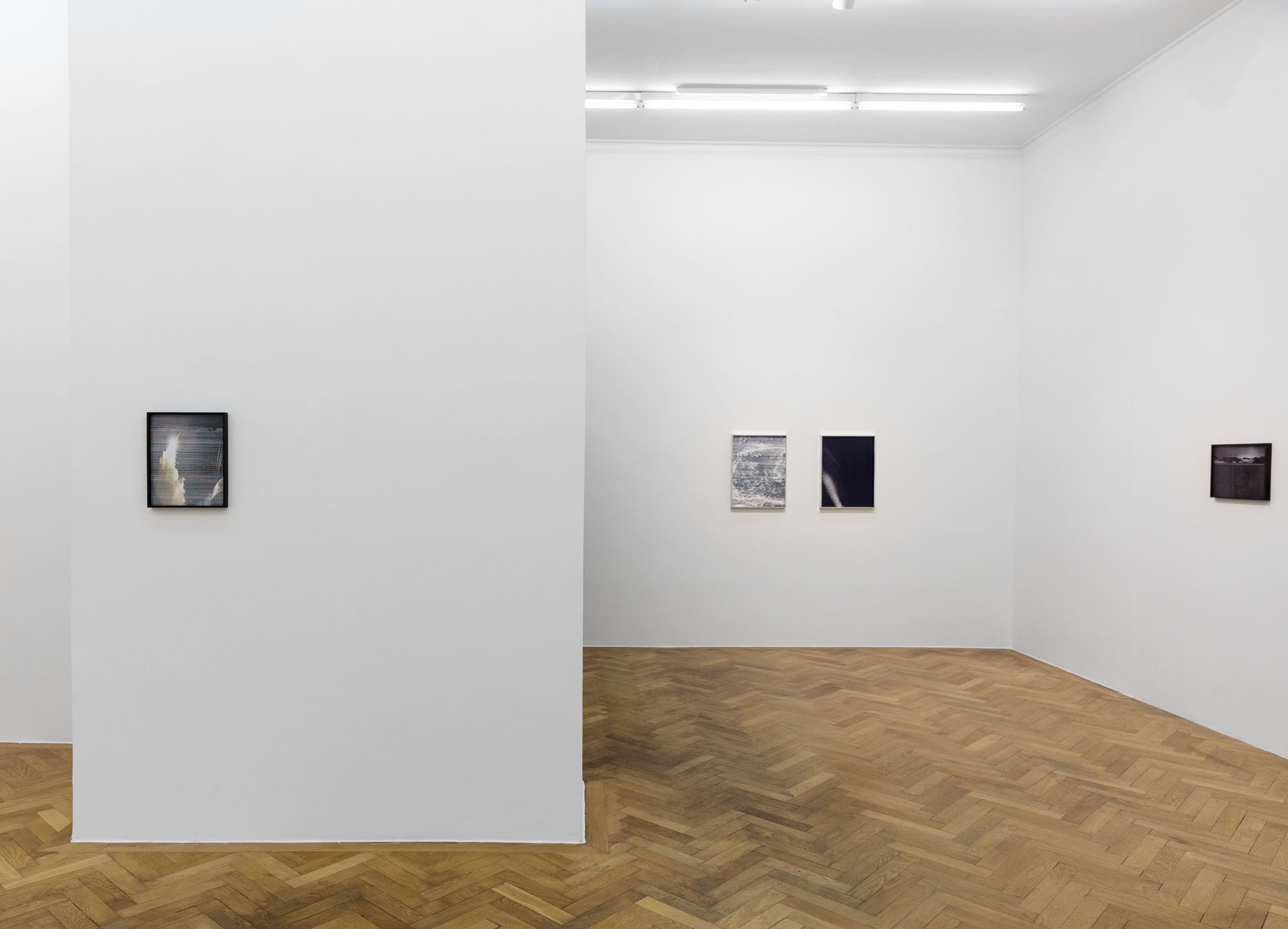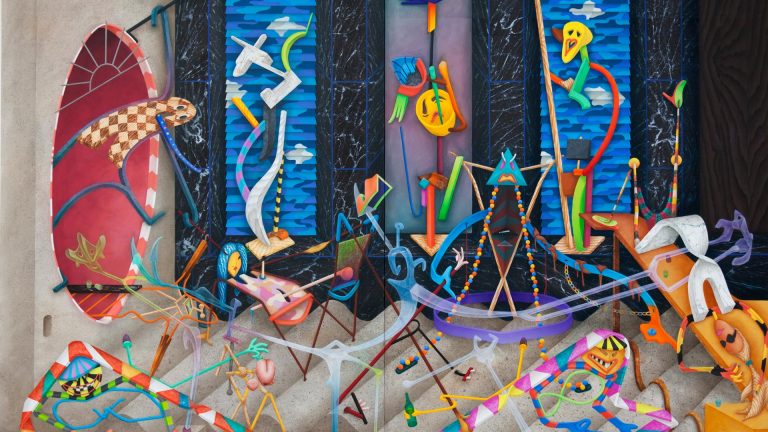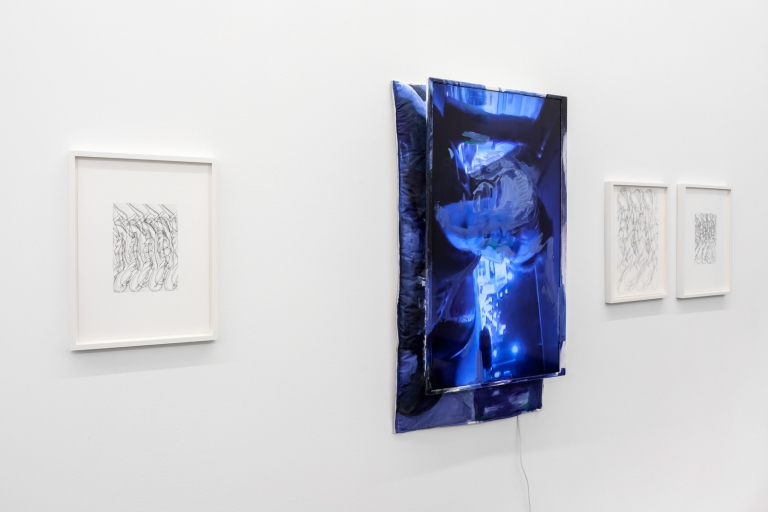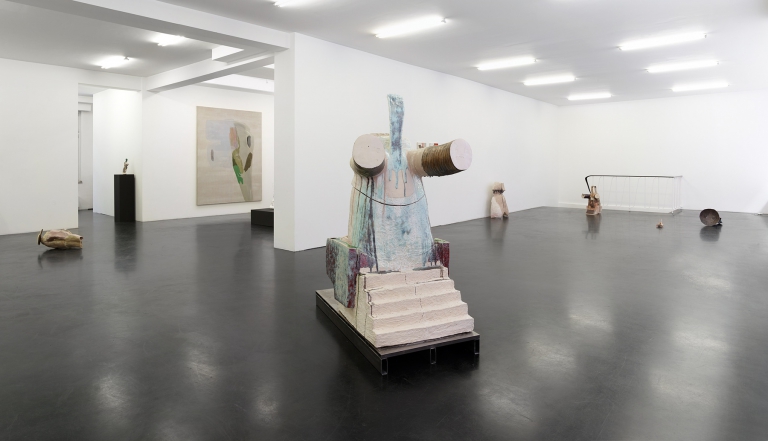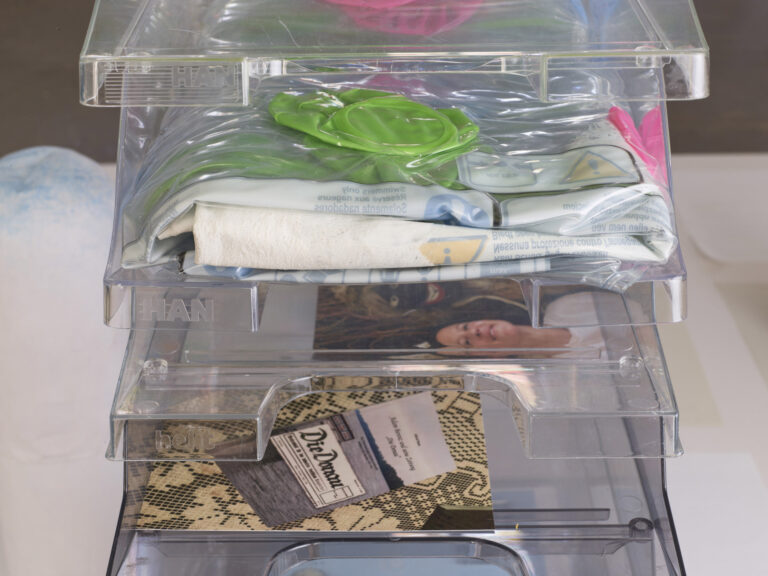Artist: Anna Vogel
Exhibition title: Enter Shift Delete
Venue: SPERLING, Munich, Germany
Date: November 7 – December 21, 2019
Photography: ©the artist. Courtesy of SPERLING, Munich. Photos by Sebastian Kissel
Anna Vogel: The Developed Image
Particularly at the time of its invention, the critique of photography was sparked by debates on the technical origination of the photographic image. This is because photography distances the human subject—who nevertheless directs the camera and subsequently chemically processes the finished photo—from the “animated” result to such a great extent, that the recognizable handwriting of painting was preferable. Nowadays, such a motivated reservation against this 180-year-old form of image creation only seems comical—or is it experiencing a renaissance in this digital age, with its manifold and enchanted flood of images?
If you take a closer look, you will notice that photographic images (at least in the context of art) have long since ceased to function in this way. This applies to the over-painted photograph in any case, yet in this field there are also surprising interventions that significantly modify the principle of “painted color on a photographic print.”
The best example of this is the work of Anne Vogel who continually undermines, in ever-new ways, the conventional horizon of pictorial expectations. In equal amounts, she employs both digital and analogue techniques—should a dualistic figure of thought be of any relevance at all. Anna Vogel mostly finds pictures, in most cases doesn’t produce them herself and subsequently edits and manipulates them. As a photographer without a camera, her approach can be seen in relation to both the art historical background of Appropriation Art and the contemporary image world of the internet.
This describes, first and foremost, the starting point of her work, which then flows into the particular treatment and handling of a selected pre-image. This may occur digitally and/or via analogue (i.e., manual) methods. In either event, this leads to a unique piece—an individual, irreproducible image—even when the artist works in series of related motifs.
Although doubt about the veracity of photographs is quite common today, digital processing and reworking, formerly referred to as “retouching,” does not play such an important role for viewers. This has much to do with the fact that the underlying (base) photos are generally not very well-known or prominent motifs. Only on second glance does it become clear that these pictures are not just simple “innocent” photographs.
The frequently strange surfaces of the images reveal that Anna Vogel uses different techniques (if not always simultaneously) to work out the final pictures. The original photo is sprayed with either varnish or acrylic paint at specific points. It is cut or incised with a utility knife, so that its surface is thereby scratched. Other images are painted with graphic lines. In many instances, Anna Vogel uses individually designed stencils as an aid to ensure repetitions— particularly in the case of scratched or drawn lines—and at the same time to deliberately incorporate disturbances. Thus, the manual, or “hand,” plays a pointed roll that interweaves with the (deconstructed) photo.
(…)
The aspect of the memory in Anna Vogel’s hybrid images, which is addressed here and is also inherent in the photographic medium in a quite traditional way, has also been emphasized by Martin Hentschel when he said: “Opaque layers of oblivion lay over the remembered.” In this respect, a certain proximity or closeness to Gerhard Richter’s painted-over photographs also becomes apparent. But whereas the media of painting and photography in his work are in recognizable conflict, in Anna Vogel’s work, the different pictorial forms are more strongly interwoven. The antipodean positing of abstraction and representation is abolished in Vogel’s work (with varying degrees of accentuation). The moment of accident or chance, for Richter a central category, plays either no roll or only a subordinate one to the almost half-century younger artist.
(…)
It goes without saying, that the question about the conditions under which an image is created does not completely exhaust its content. In addition to subjective aspects such as pleasure, beauty or memory, it is certainly the fundamental question as to the location of the individual in society and nature that resonates in Anna Vogel’s pictures. In this sense, and not just for technical reasons, they mark an important contribution to the present.
Stefan Gronert, 2019
Anna Vogel, Enter Shift Delete, 2019, exhibition view, SPERLING, Munich
Anna Vogel, Enter Shift Delete, 2019, exhibition view, SPERLING, Munich
Anna Vogel, Enter Shift Delete, 2019, exhibition view, SPERLING, Munich
Anna Vogel, Enter Shift Delete, 2019, exhibition view, SPERLING, Munich
Anna Vogel, Enter Shift Delete, 2019, exhibition view, SPERLING, Munich
Anna Vogel, Enter Shift Delete, 2019, exhibition view, SPERLING, Munich
Anna Vogel, Enter Shift Delete, 2019, exhibition view, SPERLING, Munich
Anna Vogel, Enter Shift Delete, 2019, exhibition view, SPERLING, Munich
Anna Vogel, Enter Shift Delete, 2019, exhibition view, SPERLING, Munich
Anna Vogel, Enter Shift Delete, 2019, exhibition view, SPERLING, Munich
Anna Vogel, Enter Shift Delete, 2019, exhibition view, SPERLING, Munich
Anna Vogel, Enter Shift Delete, 2019, exhibition view, SPERLING, Munich
Anna Vogel, Enter Shift Delete, 2019, exhibition view, SPERLING, Munich
Anna Vogel, Enter Shift Delete, 2019, exhibition view, SPERLING, Munich
Anna Vogel, Enter Shift Delete, 2019, exhibition view, SPERLING, Munich
Anna Vogel, Enter Shift Delete, 2019, exhibition view, SPERLING, Munich
Anna Vogel, Enter Shift Delete, 2019, exhibition view, SPERLING, Munich
Anna Vogel, Enter Shift Delete, 2019, exhibition view, SPERLING, Munich
Anna Vogel, Enter Shift Delete, 2019, exhibition view, SPERLING, Munich
Anna Vogel, Enter Shift Delete, 2019, exhibition view, SPERLING, Munich
Anna Vogel, Electric Mountains IV, 2019, pigment print, scratched, framed in polished chrome, artglass, 60 x 45 cm
Anna Vogel, Skin I, 2019, inkjet print on backlight foil framed in polished chrome, 60 x 45 cm
Anna Vogel, Clouds, 2019, lacquer on pigment print, scratched, framed in polished chrome, artglass, 54 x 41 cm
Anna Vogel, Electric Mountains V, 2019, lacquer on pigment print, scratched, framed in polished chrome, artglass, 60 x 45 cm
Anna Vogel, Mountains I, 2019, collage, pigment print, varnish, framed in lime, anthracite, artglass, 30 x 40 cm
Anna Vogel, Closing window, 2019, lacquer on pigment print framed in lime, anthracite, artglass, 30 x 40 cm
Anna Vogel, Catching ghost, 2019, lacquer on pigment print framed in lime, anthracite, artglass, 30 x 40 cm
Anna Vogel, Lake, 2019, ink on pigment print, framed, in lime, anthracite, artglass, 21 x 26.3 cm
Anna Vogel, Rocket, 2019, pigment print, varnish, scratched, framed in lime, anthracite, artglass, 37 x 30 cm
Anna Vogel, Electric Mountains II, 2019, pigment print, scratched, framed in lime, anthracite, artglass, 80 x 60 cm
Anna Vogel, Society, 2019, Indian ink on pigment print framed in lime, anthracite, artglass, 40 x 30 cm
Anna Vogel, Electric Mountains III, 2019, pigment print, scratched, framed in lime, anthracite, artglass, 40 x 30 cm
Anna Vogel, Electric Mountains I, 2019, pigment print, scratched, framed in lime, anthracite, artglass, 80 x 60 cm

